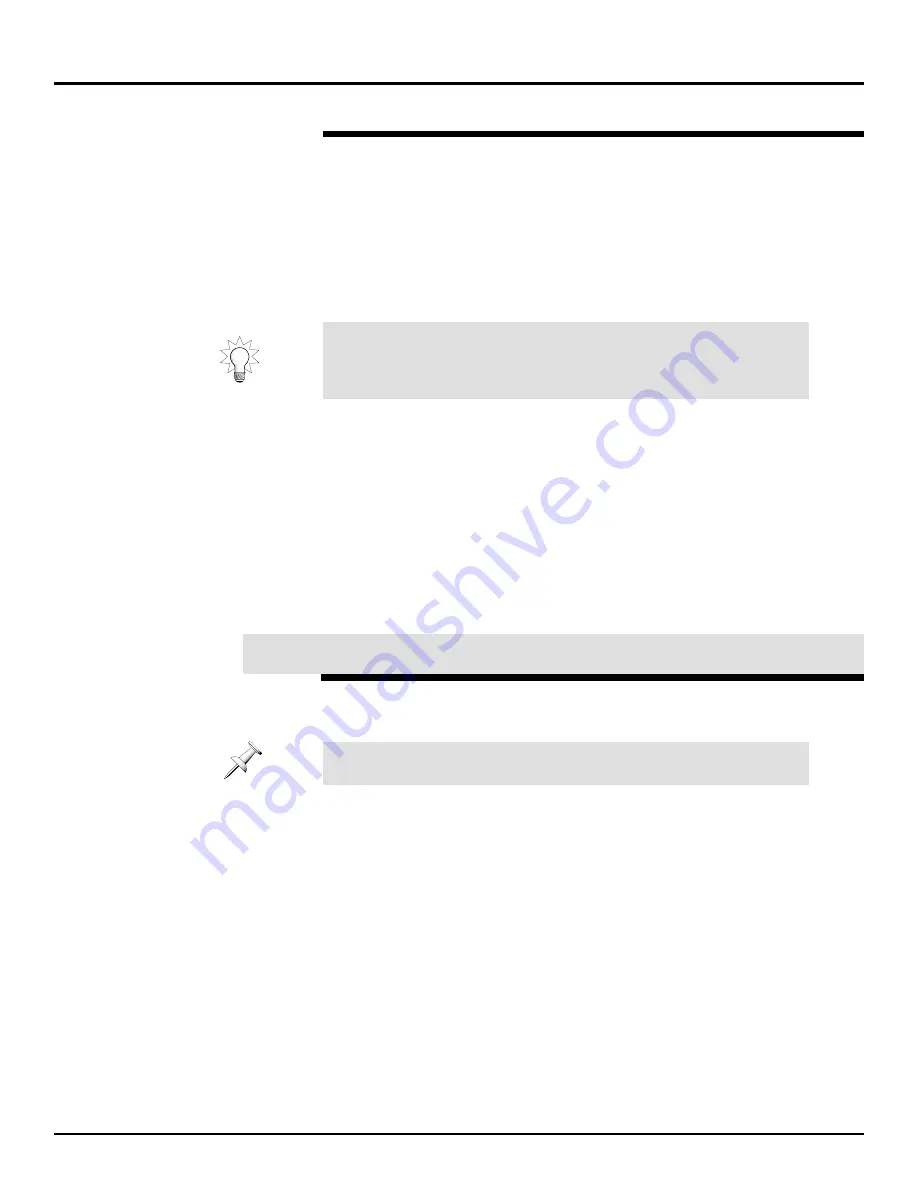
How to Make a Connection in the Patchbay
In the patchbay, you route a signal to a destination with two easy steps:
•
Press the CURSOR buttons to select the destination.
•
Turn the destination’s V knob to select the desired source signal.
As an example, let’s route a cue mix to a pair of ASSIGNABLE OUT
jacks—we’ll use ASSIGNABLE OUTs 7 and 8. You might want to do this
when setting up a stereo headphone mix for performers in a studio, or
when creating a stereo monitor mix for performers onstage.
To patch a cue mix into ASSIGNABLE OUTs 7 and 8:
1.
On the PATCH BAY screen, use the CURSOR buttons to select
R-BUS Multi Outs 19-24. As we noted on the previous page, signals
sent to Multi Outs 23 and 24 are also sent to ASSIGNABLE OUT
jacks 7 and 8.
2.
Turn V5—the knob corresponding to Multi Out 23—clockwise until
you see a patch cord connecting CUE L in the middle row of boxes
to R-BUS Multi Out 23 in the bottom row.
3.
Turn V6 to connect CUE R to Multi Out 24.
Once you’ve routed the cue mix to the ASSIGNABLE OUT jacks, you
can connect the jacks to your headphone or monitor amplifier.
Now that we’ve got a good general sense of how things work, let’s go
through the required steps for routing an actual signal into the main mix.
Though we’ll be working with a single microphone’s signal, the
procedure is the same when working with a group of signals—just
repeat the steps for each one.
1.
Start, as you would in a normal session, by connecting a
microphone to an input on the processor. For simplicity’s sake,
connect a mic to Input 1 on the processor. You can use either the
1/4” or XLR Input 1 jack (you wouldn’t normally want to use both at
the same time).
2.
Hold down SHIFT and press EZ ROUTING to go to the patchbay.
3.
Look at the display to make sure that there’s a patch cord
connecting INPUT jack 1 to Input Channel 1.
4.
Press the INPUT CH 1-24 SECTION button—so that it lights—since
we’ll be working with a standard input channel.
5.
Press the PREAMP GAIN PARAM VIEW on Fader button so that
the faders assume control of all of the channel preamp gain
settings. The faders are at their +4 position, all the way back
towards you.
©
2000 Roland Corporation U.S.
Getting Started with the VM-7000
2796US, v1.0
Page 16
The Patchbay (Continued)
®ÂØÒňÎ
Application Guide
Getting Started with the VM-7000
To create a cue mix, press the SECTION button corresponding to the
type of signal you want to use. Next, hold SHIFT and press CH LEVEL,
and use the faders to create the mix. Press SHIFT and CH PAN and
use the faders to control the stereo positioning of the cue signals.
XVIII. Getting the First Signal
As we move forward, you’ll need to listen to your VM system, either on
speakers or through headphones, as described on Page 3.






























